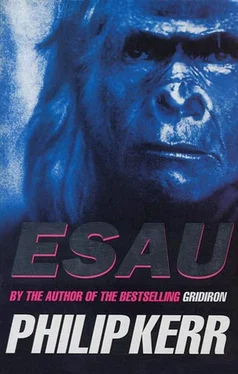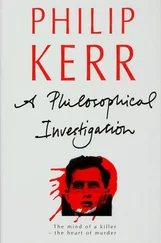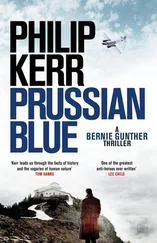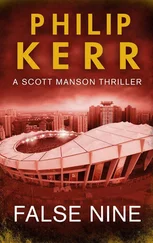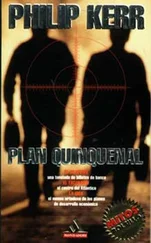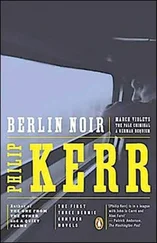The main tent, supplied by Boyd’s company and developed for use in the Antarctic, was to serve as the expedition’s laboratory, communications centre, and main living area. Jack, who thought himself an expert in storm-proof tentage, found himself impressed by the structure — not so much a tent as an inflatable building, of a type similar to those used by the U.S. Army during the Desert Storm operation in the Gulf.
The round, twenty-metre-diameter, igloo-shaped structure that Boyd referred to as the clamshell was made of Kevlar, a material most frequently used in the manufacture of bullet-proof vests, with a frame of air-beam tubes about as thick as a beer can and inflated to about three hundred times the pressure of a standard inflatable dinghy. These tubes provided a series of rigid beams almost as strong as an aluminium beam of equivalent thickness. But as well as being strong, the clamshell, which was about three metres high at its centre, was also warm. Whereas inflatable buildings in the Gulf had been kept circulated with cool air, for the Himalayas, the air inside the clamshell was heated, creating an environment sufficiently temperate for members of the team to dispense with outer-layer clothing altogether, whatever the weather outside. There was even an airlock door to prevent spindrift snow from getting inside the clamshell. The whole structure was secured to the snow and ice of the glacier basin by ‘smart’ titanium tent pegs containing shape-memory wires designed to expand and then stiffen when subjected to pressure. Boyd said that in Antarctica the clamshell had withstood winds of up to two hundred and forty kilometres per hour.
The same helicopter that dropped in the clamshell also brought in the Semath Johnson-Mathey fuel cell. About the same size as a small car’s engine, the fuel cell was essentially a battery that could not run down, generating about five kilowatts and providing the expedition with all the energy it would need to run heat, light, and the various items of electrical equipment the porters had carried up from Chomrong — too delicate to drop from an aircraft. These included four ruggedised Toshiba Portégé laptops, a desktop PC Gel Documentation system, a Toshiba microwave oven to cook the MREs (meals, ready to eat), a portable pressurization chamber for extreme cases of altitude sickness, and a small digital weather station.
Communications in the field were to be achieved using handheld GPS units, while regular contact between ABC and the expedition office in Pokhara relied on powerful Satcom transceivers: with a broadcast power of eighteen watts, the transceivers were sufficiently powerful to serve the US-Robotics 14,400 PCMCIA fax modem cards inside each laptop computer, providing the expedition with electronic mail links to offices several time zones away.
‘This is the best equipped outfit I ever teamed with,’ Jack told Boyd.
‘You ain’t seen nothing yet,’ chuckled Boyd. ‘Just wait until you get to try one of the SCE suits. SCE. That’s Self Contained Environment. My institute had them developed by the International Latex Corporation in Delaware especially for exploration work in the Antarctic. They’re kind of similar to the EMU suits they made for the astronauts on the shuttle program.’
‘You mean like a space suit?’ Jack laughed. ‘C’mon, man, you’re shitting me.’
‘No way. It’s like you said when we met. Jack. There’s only one place gets colder than up here and that’s outer space. Absolute goddamn zero. An SCE suit? Well, I’ll tell you, it’s kind of like being in a Rolls-Royce. Once you’ve been in one you won’t want to go in anything else. Believe me. Jack, when you have to leave the clamshell in really shitty weather, you’ll wonder how you ever managed without one.’
Under Jack’s watchful eye, the team began to assemble underneath the clamshell, installing computers, checking communications, sorting gear, testing equipment, and planning reconnaissance. Meanwhile, the porters put away many of the stores in one of the newly excavated lodges.
The sirdar was Hurké Gurung, a wiry, handsome-looking man in his late forties, and an old-style Sherpa, according to Jack. Although he could neither read nor write, his face was full of the quiet confidence and experience he had gained from climbing with some of the world’s greatest mountaineers. He had been twice to the summit of Everest — once with Jack — and as part of an ill-fated Japanese expedition to climb Changabang, or K2 as it was better known in the West, on which ten people had died, he was one of the few men alive who had made it to the top of the world’s second-highest mountain via its ‘impossible’ west face. As well as being a proficient climber, Hurké Gurung was also a trained soldier. Before becoming a Sherpa, he had served with the Gurkha Rifles, reaching the rank of Naik, sergeant, and was a skilled tracker. But Gurung had one extra special qualification that made him indispensable to the expedition. Like Jack Furness, he too had seen a yeti.
The assistant sirdar, Ang Tsering, lacked the older man’s experience, but having attended the Sir Edmund Hillary School, he could read and write, and had even visited America. Like Gurung he spoke a Sherpa dialect of Tibetan, Tibetan proper, and Nepali. His English was better than the sirdar’s, although he spoke it with such archaic formality that he sometimes sounded like a character from a novel by Henry James. He also spoke some German, which Jutta Henze, the expedition doctor, was determined to help him improve. Tall, slenderly built, with a sea urchin haircut, almost lidless eyes, a broad nose, and an uncertain smile, Tsering was a cautious-looking man. In the smart new winter clothes he had been given for the expedition, and with a Yak cigarette rarely absent from his mouth, he reminded Swift most of some cocksure French ski instructor. Jack told her that this was not so very wide of the mark, as Tsering had no experience of mountaineering or scientific expeditions, only of guiding tourist treks, and that the Western women who went walking in the Himalayas often had affairs with their guides.
Jack thought that Jutta Henze was just the type to pick and choose the men with whom she had affairs. Powerfully built with strawberry blond hair and a shower of russet freckles, she was a terracotta warrior of a woman, a neoclassical ideal of what a heroine on the grand scale ought to look like. The eighteen-month widow of Gunther Henze, the famous German mountaineer killed on the Matterhorn, Jutta was an experienced climber in her own right, with a steely aspect in her blue-jade eyes that seemed to speak of both tragedy overcome and devotion to her sport and the freedom it provided. Swift thought the big German looked ruthless, as if, like Liberty leading the People, Jutta might not care if her way ahead lay across the bodies of the dead and the dying. Swift also thought her an unlikely looking doctor, but Jack told her that as she came to know Jutta better, she would understand that it was this same determination that made her such an excellent choice as the expedition’s medical officer. Every member of the team was a strong personality, inclined to make light of any ailment, and it took an even stronger personality to give the kind of doctor’s orders that were obeyed at all times and without question. Byron Cody, the team primatologist, and Lincoln Warner, a molecular anthropologist, were cases in point. Upon their arrival in Khatmandu, both men had contracted a severe form of dysentery, and Jutta had ordered them confined to the CIWEC Clinic in Baluwatar until they recovered, which meant they were a day behind the main party in leaving Chomrong for the Annapurna Sanctuary.
Dougal MacDougall was the expedition cameraman. A working-class Scotsman from Edinburgh, MacDougall had left school at sixteen to become a joiner until, deciding improbably to make a career in films, he had managed against all the odds to get a place at the London Film School. Despite never having climbed before, his first assignment for the BBC had been to join an expedition to climb the Carstenz Pyramid in New Guinea. Since then, MacDougall had established himself as a first-class climbing cameraman and all-around photographer of international repute.
Читать дальше
